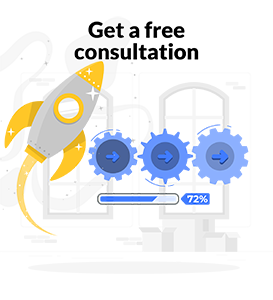The Evolution of Online Advertising: From Banners to Programmatic
Online advertising has come a long way since the early days of the internet. In the early 1990s, the first online banner ads appeared on websites, marking the birth of online advertising. These banner ads were simple and static, with no targeting or personalization capabilities.
However, as the internet continued to grow and evolve, so did online advertising. The rise of search engines like Google and social media platforms like
Facebook enabled advertisers to target their ads to specific audiences based on demographics, interests, and behavior.
Today, programmatic advertising has emerged as the dominant form of online advertising. Programmatic advertising uses algorithms and data to automate the buying and selling of online ads, allowing advertisers to reach their target audiences at scale and in real-time.
Programmatic advertising has also brought new formats and channels to online advertising, such as video ads, native ads, and connected TV ads. These new formats and channels enable advertisers to deliver more engaging and personalized experiences to their audiences.

The Benefits and Challenges of Online Advertising for Businesses
Online advertising offers many benefits for businesses, such as:
- Reach: It allows businesses to reach a global audience, regardless of their physical location.
- Targeting: It enables businesses to target their ads to specific audiences based on demographics, interests, and behavior.
- Cost-effectiveness: It can be more cost-effective than traditional advertising channels like TV, radio, and print.
- Measurability: It provides businesses with real-time data on ad performance, allowing them to optimize their campaigns for better results.
However, there are different types of online advertising and it also poses some challenges for businesses, such as:
- Ad Fraud: It is susceptible to ad fraud, which can result in wasted ad spend and damage to a business’s reputation.
- Ad Blocking: Many internet users use ad-blocking software to avoid online ads, making it harder for businesses to reach their target audiences.
- Privacy Concerns: It has come under increased scrutiny for its use of personal data, which has raised concerns about privacy and data protection.
- Ad Fatigue: Online users are bombarded with ads every day, which can lead to ad fatigue and reduced engagement with online ads.

The Role of Data in Online Advertising
Data plays a crucial role in online advertising, enabling advertisers to target their ads to specific audiences and measure their performance. There are several types of data that advertisers can use in online advertising:
- First-Party Data: First-party data is data that businesses collect directly from their customers, such as purchase history and website behavior. First-party data is highly valuable because it reflects the actual behavior of a business’s customers.
- Second-Party Data: Second-party data is data that businesses acquire from other businesses. For example, a retailer might acquire data from a credit card company to better understand its customers’ spending behavior.
- Third-Party Data: Third-party data is data that businesses acquire from data brokers or other third-party sources. Third-party data can provide valuable insights into consumer behavior and interests, but it can also be less reliable than first-party data.
Data also plays a critical role in programmatic advertising. Programmatic advertising relies on data to automate the buying and selling of online ads, allowing advertisers to reach their target audiences at scale and in real-time.
However, the use of data in online advertising has also raised concerns about privacy and data protection. Many consumers are uncomfortable with the collection and use of their personal data for advertising purposes, which has led to increased regulatory scrutiny of online advertising practices.
The Importance of Creativity in Online Advertising
While targeting and data are important components of online advertising, creativity also plays a critical role in the success of online ad campaigns. A well-crafted ad can capture the attention of an audience and drive engagement and conversions.
One of the benefits of online advertising is the ability to use a variety of ad formats and channels, from static banners to immersive video ads. Advertisers can also use interactive elements, such as quizzes, games, and polls, to engage with their audiences.
However, creating effective online ads requires more than just flashy graphics or catchy slogans. Advertisers must also consider the context in which their ads will be displayed and the emotions they want to evoke in their audiences.
Another factor to consider is the importance of mobile optimization. With mobile devices becoming the primary way people access the internet, ads must be optimized for smaller screens and shorter attention spans.
Overall, creativity is a crucial component of successful online advertising campaigns, and advertisers must constantly innovate and experiment with new formats and strategies to stand out in a crowded digital landscape.
Trends to Watch in The Future
As online advertising continues to evolve, several trends are emerging that are likely to shape the future of the industry. Here are some key trends to watch:
- Privacy-First Advertising: With increased scrutiny on data privacy, advertisers are exploring new ways to reach audiences without relying on personal data. One approach is contextual advertising, which targets ads based on the content of a webpage rather than user data.
- Connected TV Advertising: As more consumers cut the cord and shift to streaming services, connected TV advertising is becoming an increasingly important channel for advertisers. Connected TV advertising enables advertisers to deliver targeted ads to viewers on their TV screens.
- Augmented Reality Advertising: Augmented reality (AR) technology is becoming more widely available, and advertisers are starting to experiment with using AR in their ad campaigns. AR can create immersive and interactive experiences for users, helping ads stand out in a crowded digital landscape.
- Voice Advertising: As voice-activated devices like Amazon’s Alexa and Google Home become more prevalent, advertisers are starting to explore the potential of voice advertising. Voice ads enable advertisers to deliver personalized messages to users in a natural, conversational way.
- Interactive Advertising: Interactive ads, such as quizzes, games, and polls, are becoming increasingly popular with advertisers as a way to engage with audiences and drive brand awareness. As technology continues to evolve, interactive ads are likely to become even more sophisticated and immersive.
Final words
All in all, online advertising has come a long way since the early days of banner ads, and it continues to evolve at a rapid pace. While it offers many benefits for businesses, it also poses challenges such as ad fraud and privacy concerns. Data, creativity, and innovation will be critical factors in the success of online advertising campaigns, and advertisers must constantly adapt to new trends and technologies to stay ahead of the competition.
Curious about the ins and outs of digital marketing?
Subscribe to our email newsletter for the latest digital marketing insights, and also make sure to read our blogs. See you next time!






